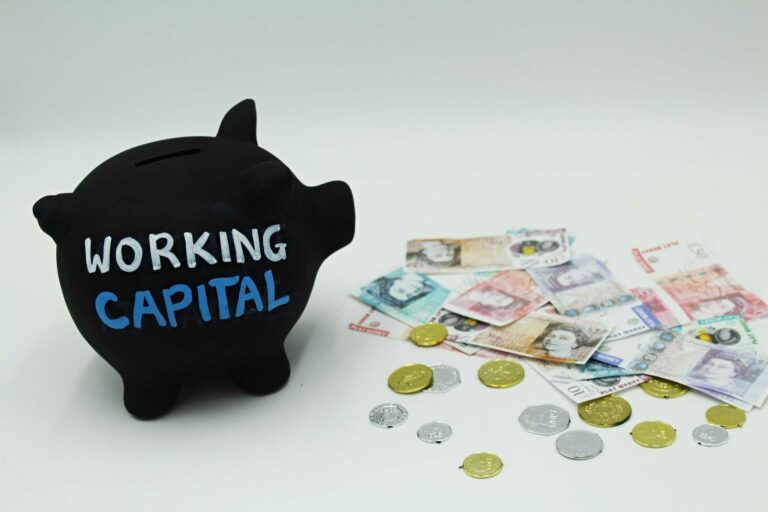Working capital: meaning, importance, calculation, and more

What is working capital?
Working capital is the amount needed daily to meet all obligations and expenses of a business for a financial year. A company must be capable of keeping itself running and this requires a healthy working capital.
The working capital of a company is obtained by deducting the current liabilities (creditors and other short-term debts) from the current assets (inventories, debtors, cash, and cash equivalents). It indicates the extent to which a company can afford short-term expenses. Some obvious examples are the wages of the employees, the rent of a warehouse, the replenishment of supplies, or the payment of the energy bill. Working capital is needed to run the day-to-day operations of your business.
Why every company must have a working capital
Working capital is needed to run a business in the short term and to meet necessary expenses. Simply put, working capital is the sum of liquid assets and current assets, these assets are also easily converted to cash.
The working capital of a company is like its live wire, without it the company would find it difficult to integrate the market and build an efficient product for its customers. The working capital acts as a soul to the company, it technically is the basic amount required by the company to engage in business, the working capital of a company is required to pay salaries, engage in costs for production, and to undertake any other expense that the company requires to be in business.
Gross working capital VS net working capital
When one speaks of the gross working capital, one is talking about stocks and accounts receivable, supplemented by liquid assets (for example current assets).
The net working capital is the gross working capital less the invoices that your company still owes to others (creditors) and other short-term debts (for example the current assets – the current liabilities).
The importance of working capital
Without working capital, a company cannot meet its financial obligations. This can translate into not being able to pay employees or paying suppliers late. Such a situation sours the relationship between the parties involved and can put pressure on negotiations or collaborations in the future. A shortage of working capital can lead to bankruptcy. (Sufficient) working capital is vital for healthy business operations.
The working capital is also an indication of success by the company, the trick is the excessive the income of a company is, the more successful the company is likely to be. A company with an excessive working capital can easily manoeuvre the rigidity of the market and scale through to productivity.
Working capital VS cash flow
Working capital is often confused with cash flow. Although both terms are related, they have different meanings.
Cash flow, also known as “cash flows” or “cash flows”, is the difference between all income and all expenses over a period of time. Working capital also includes money tied up with accounts receivable and inventory. It is therefore a broader concept than cash flow.
Working capital and cash flow are inextricably linked. For example, there may be a large number of outstanding invoices (debtors), while there is an immediate need for cash to pay a supplier.
How to boost your working capital
Proper management of working capital is essential. A dip in working capital is not the end of the world. However, it is important to prevent this from becoming a recurring problem. That is why working capital financing can be interesting for your company.
There are a whole range of ways to boost your working capital, including factoring, financing through the bank or even through crowdfunding.;
1. Through factoring
Factoring gives your company (again) breathing space. Your outgoing invoices are taken over by a factoring company, so you don’t have to wait for your customers to pay their invoices.
You are not obliged to transfer your entire customer base to the factoring company.
2. Through crowdfunding
Crowdfunding is also considered a form of working capital financing. Both individuals and companies can request help from other people through certain platforms. This form of financing is certainly a gamble for companies.
A lot depends on your company image and your ‘fan base’ . Customer loyalty takes on a completely different dimension with this form of financing.
3. Through good stock management
Good and well thought – out stock management can save your company a lot of costs and worries. For example, adjust your stock to demand.
An unnecessarily large inventory can be detrimental to your working capital.
How to calculate working capital
The working capital position is influenced by debtors, creditors and inventories. When debtors take longer to pay, the working capital position deteriorates. When suppliers can be paid later, the working capital position improves. Keeping large inventories is also negative for the working capital position, as it takes longer before they can be converted into cash.
The formula for calculating Net Working Capital is Current assets (debtors, inventories, etc.) + Cash and cash equivalents – Current liabilities (accounts payable, loans, etc.).
Conclusion
There are several ways to influence your working capital position. By analyzing the payment behaviour of new customers you can protect yourself against late paying customers. You can also make agreements with your customers to reduce payment terms.
On the other hand, you can try to pay your suppliers later. Try to use the entire payment term, and do not pay invoices earlier than necessary. Finally, matching inventory with sales is also beneficial for the working capital position. Less inventory means less cash tied up in the warehouse.
Don't miss a thing. Follow us on Telegram and Follow us on WhatsApp. If you love videos then also Subscribe to our YouTube Channel. We are on Twitter as MakeMoneyDotNG.





